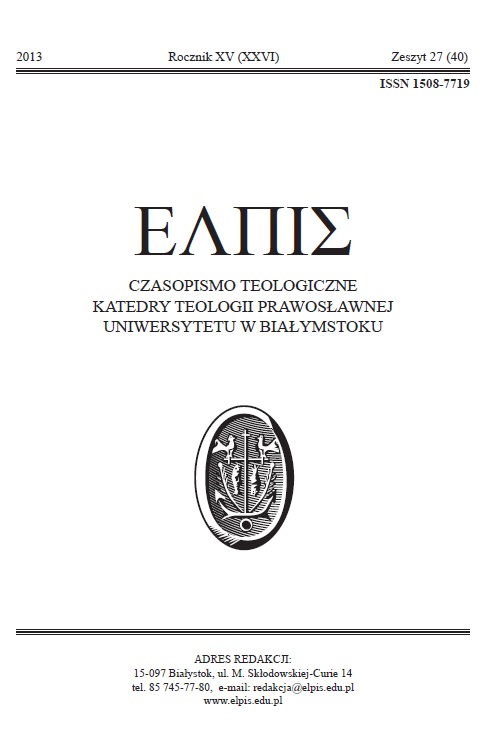Christian reckoning of time
DOI:
https://doi.org/10.15290/elpis.2013.15.14Keywords:
calendar, reckoning of years, liturgical orthodox calendar, julian, gregorian, neojulian, attempts to reform calendarAbstract
The issue of the liturgical calendar of the Orthodox Church is one of the topics currently being discussed. Using thejulian or neojulian liturgical calendar raises in faithful not only dilemmas or doubts, but also confusion, as shown by discussions
on some social networking sites.
The author of this text wants to bring closer reader to the problems of this issue and clarify the liturgical and calendar
duality. This paper also develops such topics as the history of the christian calendar, reckoning of years, creation of calendars:
julian, gregorian and neojulian, as well as problems arising from using two calendars within one local Church.
This work shows that the use of one kind or another calendar is not a violation of dogma, but may lead to a breach of
a rule, established at the time of the Ecumenical Councils. You should be aware that the julian calendar was not strictly
a calendar set up for the liturgical aims, but it was adapted for formulating the liturgical order.
Experience of the liturgical life shows that, even though type of calendar is not a dogma, entering neojulian calendar
permanently divided some local Orthodox communities. Introduction of neojulian calendar was not necessary, and the
events at the beginning of the twentieth century is warning to refrain from taking radical action to reform liturgical life.
Certainly this is a difficult issue that requires common action under the providence of Grace of the Holy Spirit.
Downloads
Downloads
Published
How to Cite
Issue
Section
License
Copyright (c) 2014 Elpis

This work is licensed under a Creative Commons Attribution-NonCommercial-ShareAlike 4.0 International License.
The detailed terms of the CC BY-SA license (Attribution - Share Alike) are available on the Creative Commons website - link.
The author must complete and send to the editorial office (elpis@uwb.edu.pl) the completed and signed author's contract with a declaration of the originality of the article and the author's contribution to the article. Download Agreement File: HERE









